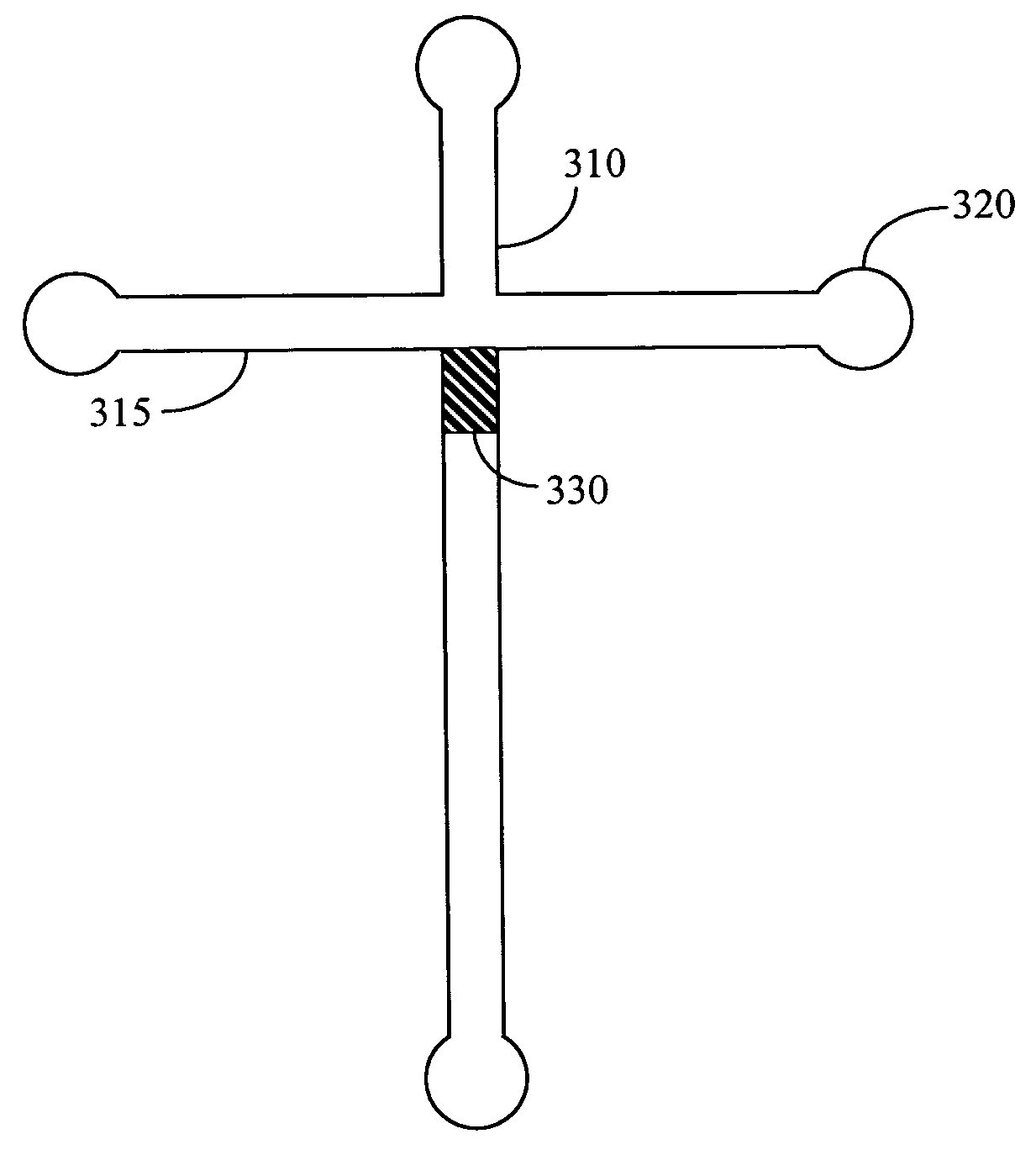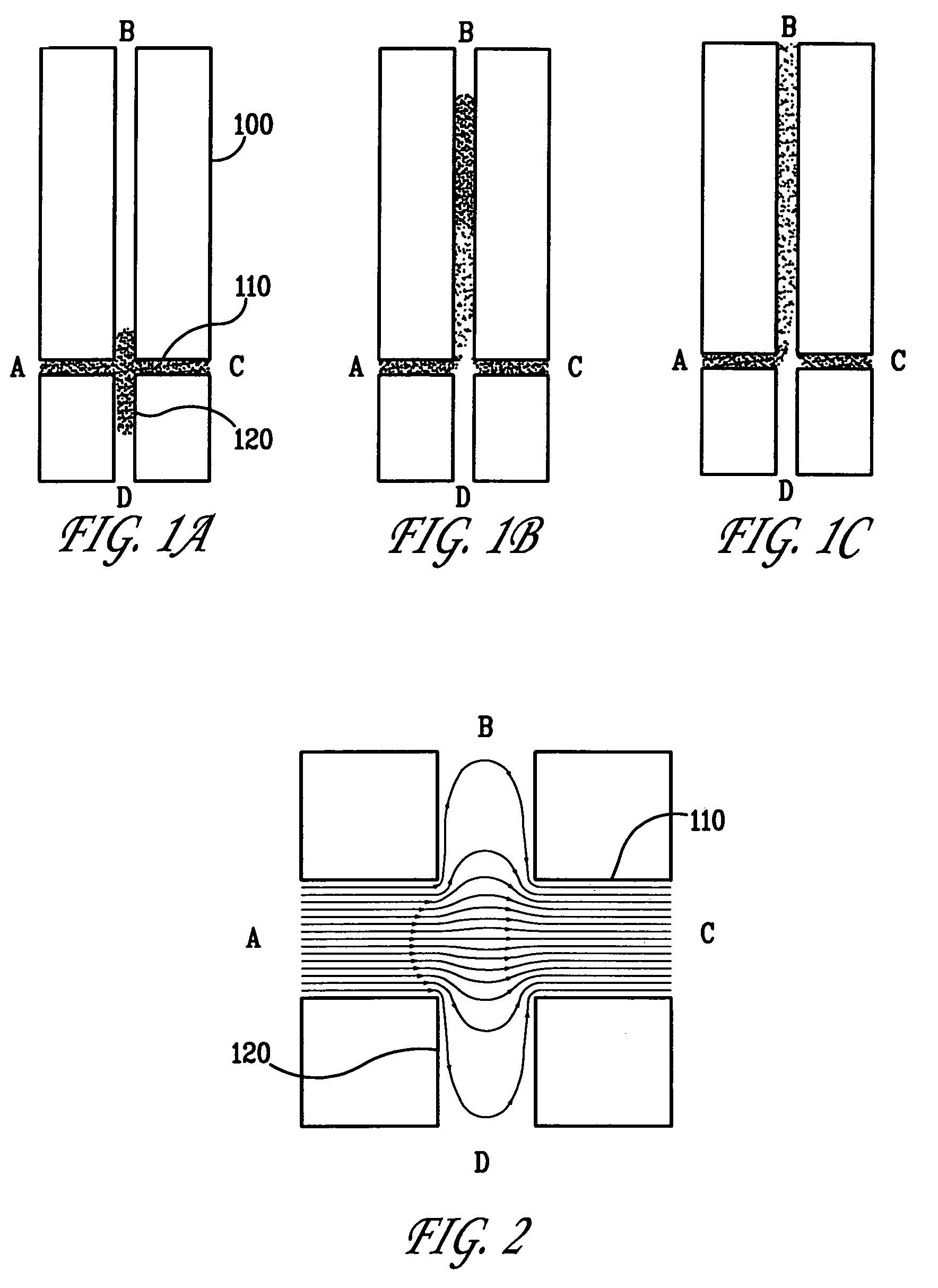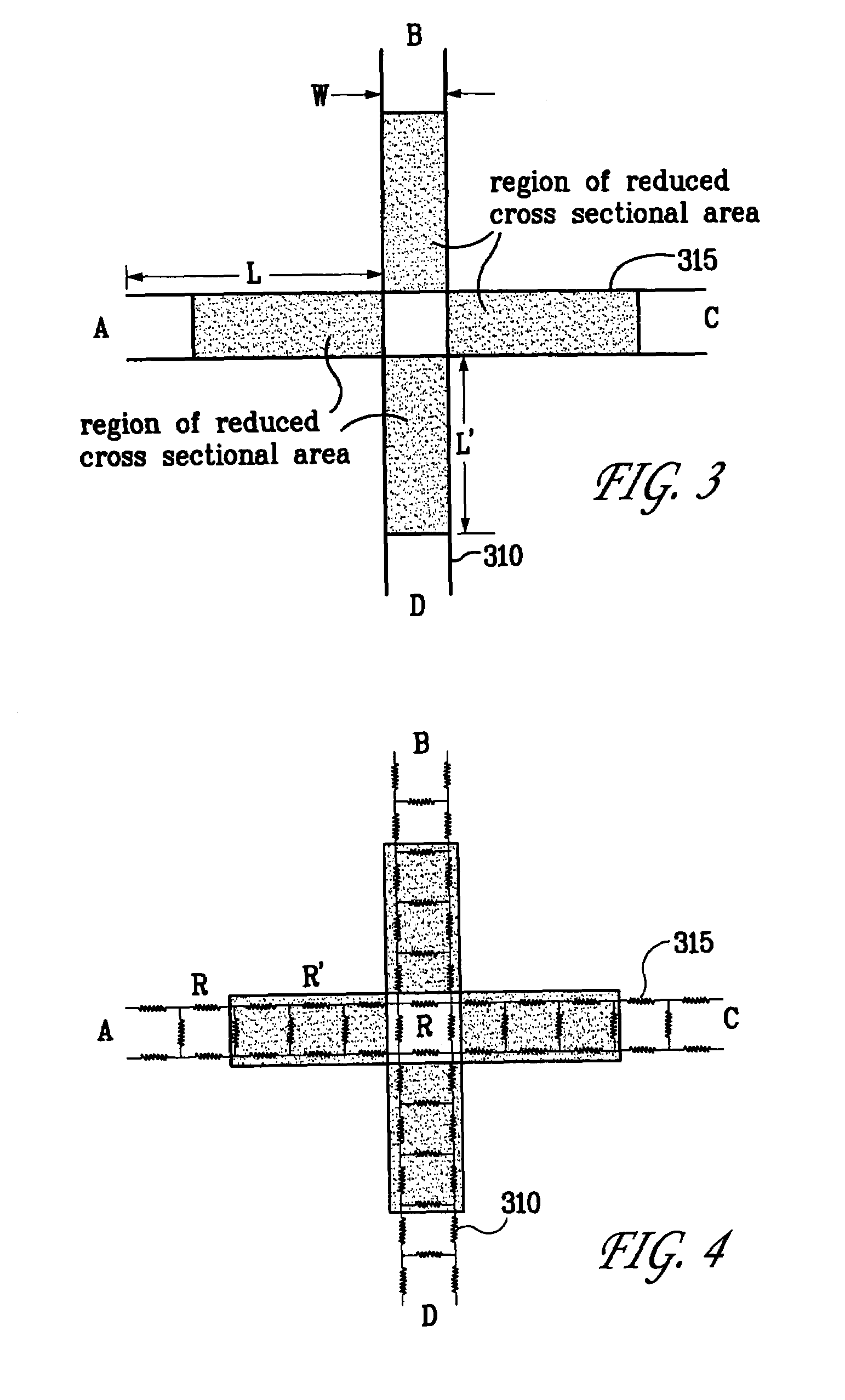Method and apparatus for controlling cross contamination of microfluid channels
a technology of microfluid channels and cross contamination, which is applied in the direction of liquid/fluent solid measurement, peptides, machines/engines, etc., can solve problems such as method disruption, and achieve the effects of reducing or substantially eliminating channel cross contamination, reducing cross-sectional area, and reducing cross-sectional area
- Summary
- Abstract
- Description
- Claims
- Application Information
AI Technical Summary
Benefits of technology
Problems solved by technology
Method used
Image
Examples
Embodiment Construction
[0022]The present invention provides improved performance in microfluidic devices by significantly reducing or substantially eliminating sample dispersion effects and cross-contamination between channels. A region of reduced cross-section within a microchannel, that can be proximate the channel junctions, is employed to control the electric-field and pressure-driven fluid flows responsible for degraded performance.
[0023]For the purpose illustrating and exemplifying the present invention, consider a standard geometry presently used in the art, as shown in FIG. 3: two microchannels 310 and 315, having widths W and depths D, that intersect at a junction in a right cross. The widths and depths of the microchannels are typically in the range of 0.1 micron to 1 millimeter. The invention is not limited to this geometry and can apply equally to any number of microchannels of any widths and depths or any arbitrary cross-section, either straight or curved, at intersections of any arbitrary an...
PUM
| Property | Measurement | Unit |
|---|---|---|
| sizes | aaaaa | aaaaa |
| depths | aaaaa | aaaaa |
| included angle | aaaaa | aaaaa |
Abstract
Description
Claims
Application Information
 Login to View More
Login to View More - R&D
- Intellectual Property
- Life Sciences
- Materials
- Tech Scout
- Unparalleled Data Quality
- Higher Quality Content
- 60% Fewer Hallucinations
Browse by: Latest US Patents, China's latest patents, Technical Efficacy Thesaurus, Application Domain, Technology Topic, Popular Technical Reports.
© 2025 PatSnap. All rights reserved.Legal|Privacy policy|Modern Slavery Act Transparency Statement|Sitemap|About US| Contact US: help@patsnap.com



